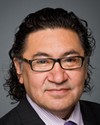I will try to do this briefly, but it is a long process.
The key principle is transparency, and so the project proponent is under an obligation to engage communities early in that process in terms of their intent. Typically, the environmental assessment process begins well in advance of the formal process. What has happened in James Bay, which has been a model for the other regimes across the north, has been teaching industry the benefits of early community engagement and developing those relationships, not only to find out traditional knowledge and how it can mitigate potential impacts in communities, but also to convey what the risks associated with the project are that a community really needs to be mindful of.
The process potentially begins as early as prospecting, and that would be a good business process. As you said in your introduction, it did take some time for industry to become accustomed to that approach to doing business. I would say that, by all accounts, the systems in James Bay and across the north are where the rest of the country should be going with respect to environmental assessment and community participation.
Once they have done that work, then they make their application, and it usually gets triggered for an environmental review. The board would then invite the proponent to provide an environmental impact statement that would describe all the potential impacts on the environment based on the proponent's assessments. Then that would go through a public process, and communities would have the opportunity to review the adequacy.
Once the board has collected the information that it believes is necessary,
and that provincial and federal governments, scientists and anyone else have been asked,
then they have to determine whether the information is complete, whether or not the risks can be mitigated, and if the risks can be mitigated, to give some indication of how they should be mitigated. Then they submit the report for approval.
Once that's done, it's up to the decision-makers to accept the environmental assessment report. In the case of Yukon, that has changed over time from the Minister of Indigenous and Northern Affairs to northerners through devolution, but at the end of the day, they make the call on whether the report is accepted and, if it is, then they proceed to the regulatory phase.





